INSIDE LOOK: Redevelopment of Royal Hobart Hospital
Construction will soon begin on the second stage of the Royal Hobart Hospital redevelopment which will feature a new sleep medicine service and surgical ward. SEE THE DESIGNS >>
Tasmania
Don't miss out on the headlines from Tasmania. Followed categories will be added to My News.
CONSTRUCTION work will begin soon on two projects which form part of the second stage of redevelopment at the Royal Hobart Hospital, the government says.
The lower ground floor of H-Block at the hospital will be transformed into the first stage of a “significant expansion” of the Emergency Department to help meet growing demand, Health Minister Jeremy Rockliff said.

And J-Block will also be refurbished to house upgraded services, including the relocation of the cardiology unit from D-block to a newly renovated 38-bed ward.
A new sleep medicine service will be established on J-Block, with three beds and a general medical and surgical inpatient ward will be established on J-Block level three allowing services to be maintained while A-Block is also renovated.
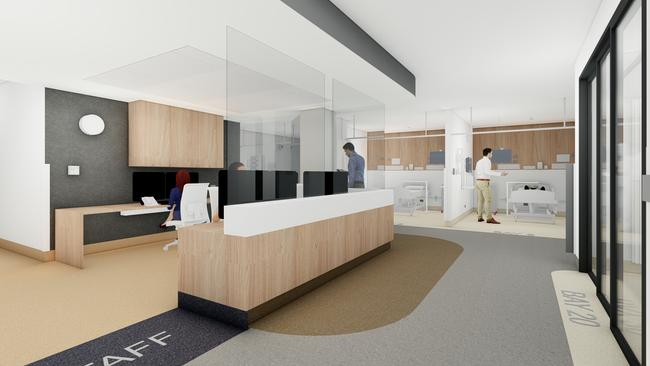
The $12 million redevelopments of J-Block and $14 million emergency department expansion were signed off by the Parliamentary Standing Committee on Public Works earlier this year.
Work will begin next week with completion by September at an estimated cost of $28m.
Horror stats: Grim report card for Tassie’s public hospitals
The Australian Medical Association has kept up the pressure on decision makers to devote an extra $20.7bn over four years towards the ailing Tasmanian public health system, releasing an online tool for patients to see how their hospital ranks – and it doesn’t make pretty reading for the island state.
It comes after the recent launch of the Tasmanian chapter of the ‘AMA Public Hospital Report Card 2022’, where president Dr Omar Khorshid described the state’s system as a “tale of woe”, with Tasmania continuing to “languish at the bottom” in terms of hospital performance.
Now, as part of its ‘Clear the Logjam’ campaign calling for further federal funding – $20.7bn over four years in Tasmania’s case – for public hospitals, the AMA has released an online ‘hospital logjam finder’ tool, which allow users of the public hospital system to see how theirs perform, according to the Australian Institute of Health and Wellbeing’s latest data (2020–21), in the key metrics of elective surgery and emergency department admission wait times.

It makes for uncomfortable reading, with all four major pubic hospitals, Royal Hobart, Launceston General, Mersey Community and North West Regional, receiving a red rating, meaning they saw less than 84 per cent of patients within the clinically recommended time frame – in six of eight categories.
Royal Hobart, in fact, only received one pass mark by the AMA – it saw 100 per cent of ED patients at the resuscitation level immediately.
However, at all other levels of seriousness, from emergency (requiring treatment within 10 minutes) down to non-urgent (requiring treatment within two hours), Royal Hobart saw less than 85 per cent of patients within the clinically recommended time frame.
For urgent patients – requiring treatment within half-an-hour – they only saw 40 per cent in time.
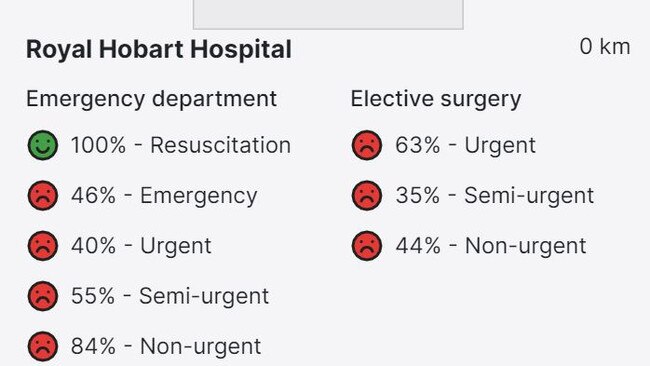
“Our public hospitals should really have received all green lights, because we are talking about the clinically recommended time frame – what the medical profession says is required to deliver the best outcomes for patients,” Dr Khorshid said.
“I think Australians will be shocked when they use the ‘logjam finder’ and see the pressure their local hospitals are under.
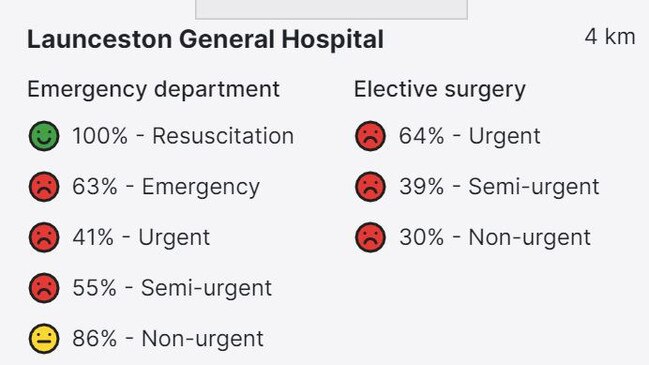
“They are justified in asking their MP: ‘is this what we have to accept for our hospitals?’ And, of course, the answer is no.”
State and federal health ministers Jeremy Rockliff and Greg Hunt have both previously defended their funding of the public hospital system.

Mr Rockliff said the state government is investing $10.7bn into health over four years, an increase of $900m from the 2020–21 budget, and has employed 872 more FTE workers into the system since July 2020.
He also said that more recent data show numbers are improving for elective surgery and ED wait times, including at Royal Hobart, where Mr Rockliff said the number of patients being seen within half-and-hour for urgent matters had risen to 52 per cent.
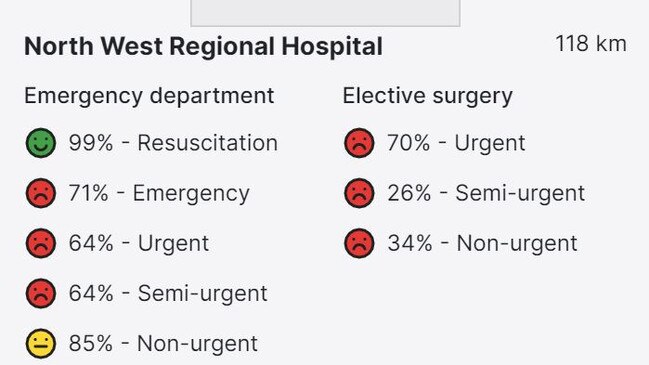
Overall, Mr Rockliff said the percentage of patients seen on time in public hospital EDs had risen from 54 per cent to 62 per cent in the 12 months to January this year.
King Island toddler’s surgery cancelled due to hospital crisis
KING Island toddler Thomas Peake hasn’t had the easiest start to life.
Born with a hereditary condition affecting his development, Thomas spent his first 18 months of life on constant flights from his island home, backward and forward to medical appointments on mainland Tasmania.
This coming Monday, he was scheduled to undergo surgery to correct a cleft palate – an essential procedure for a child already encumbered with speech delay issues.
But in yet another setback for the struggling tot, the surgery was cancelled on Friday afternoon due to Covid impacts on the hospital’s paediatric unit.
Thomas’ mum Janice said his condition, a branchiootorenal spectrum disorder, had expressed itself in significant hearing loss.
“Anything to do with the hearing aids, we have to fly to Hobart and Launceston,” she said.
“He’s a year-and-a-half, and he’s had 10 trips to Tassie.”
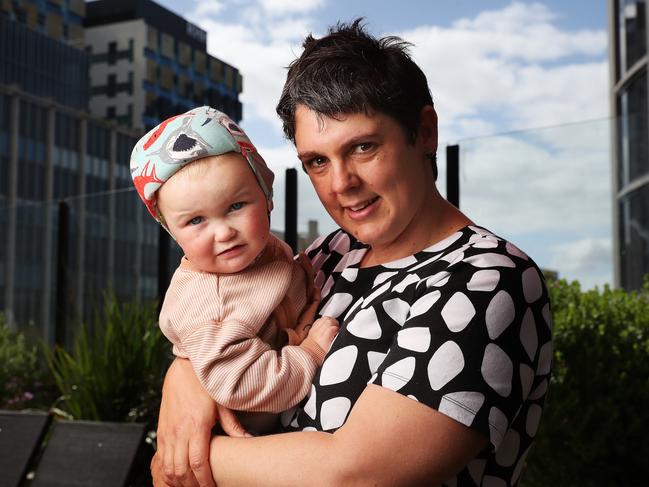
She said as a hearing-impaired child, Thomas already had delayed speech development, which was further compounded by his cleft palate.
“With the cleft palate, there’s noises and sounds he can’t perform,” Mrs Peake said.
But rather than return to King Island with the problem rectified, the family will have to go home early and wait to hear when the surgery can be rescheduled.
“We just got notified the surgery was cancelled due to Covid. Yesterday we waited three hours for our pre-op appointment. We were told they were unstaffed yesterday. I was told there was a significant impact on the paediatric unit,” Mrs Peake said.
“It’s sort of a hard one now because I don’t know what the rescheduled date is, and the more it is delayed, the more trouble Thomas will have with speech development.”
But despite the setbacks, Mrs Peake said she’d been given lots of support, with free flights from King Island to mainland Tasmania with the Patient Travel Assistance Scheme and 32 nights at Ronald McDonald House.
“It really takes all the stress off,” she said.
‘Tale of woe’: Tasmanian hospitals among worst in country, AMA says
The president of the Australian Medical Association has described Tasmania’s public hospital system as a “tale of woe” and says the state continues to “languish at the bottom” across the country on key performance indicators such as elective surgery and emergency department wait times.
However, this has been fiercely disputed by Health Minister Jeremy Rockliff, who says it is “disappointing” the AMA hasn’t acknowledged “important gains made”, such as a “record” $10.7bn health funding over four years, an extra 872 FTE health workers since July 2020 and improving wait times.
Speaking at Thursday’s launch of the Tasmanian chapter of the ‘AMA Public Hospital Report Card 2022’, AMA president Dr Omar Khorshid said the report was a “tale of woe” with Tasmania “continues to languish at the bottom” of the federation.
He said the association’s solution was for the federal government to move to a 50–50 funding arrangement with the states – currently states shoulder 55 per cent of the burden – with state governments then ringfencing their savings for reinvestment into the public health system.
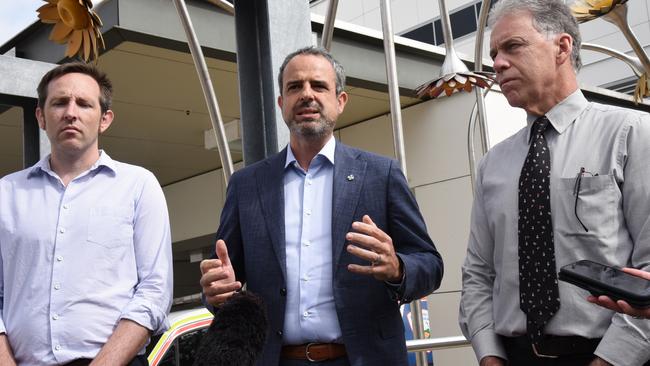
In Tasmania, this would equate to an extra $20.5bn over four years, Dr Khorshid said.
He said the “crisis point” was precipitated by Australia’s ageing population, a situation even more acute in Tasmania.
“It’s critical and cannot wait any longer,” Dr Khorshid said.
Among other statistics cited in the AMA report, which considers the 2020–21 reporting period:
- 49 per cent of ED patients in Triage Category 3 (urgent) in Tasmania were seen within the recommended 30-minute time frame.
- Only 36 per cent of patients on Category 2 elective surgery waiting lists were seen within the recommended 90 days in Tasmania.
- Only 58 per cent of emergency department visits were completed in four hours or less.
In response, Mr Rockliff said more recent statistics and government initiatives showed the situation was improving.
“The elective surgery wait list has actually reduced by 15 per cent in the 12 months to the end of January this year,” he said.
“The percentage of elective surgery patients seen within clinically recommended time frames has increased from 47 per cent to 56 per cent in the 12 months to January.
“In our emergency departments, the percentage of patients seen on time has risen from 54 per cent to 62 per cent in the 12 months to January.”
He said “while there is always more to do, we have a long-term plan for health and we are delivering it”.
More Coverage
Read related topics:Tasmania health




